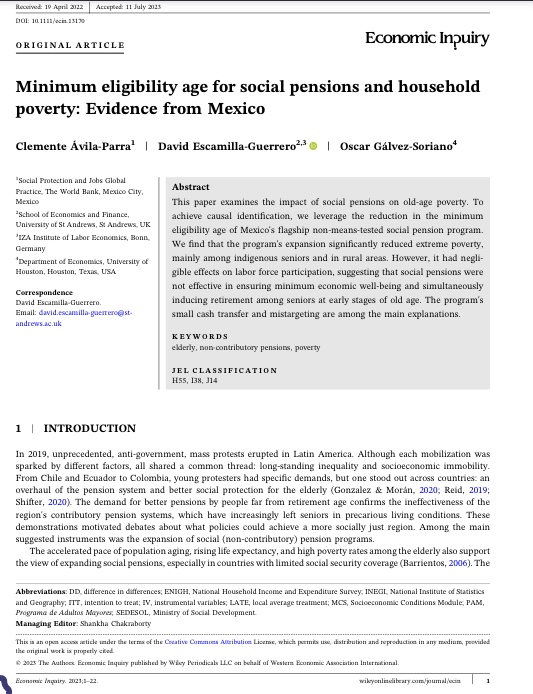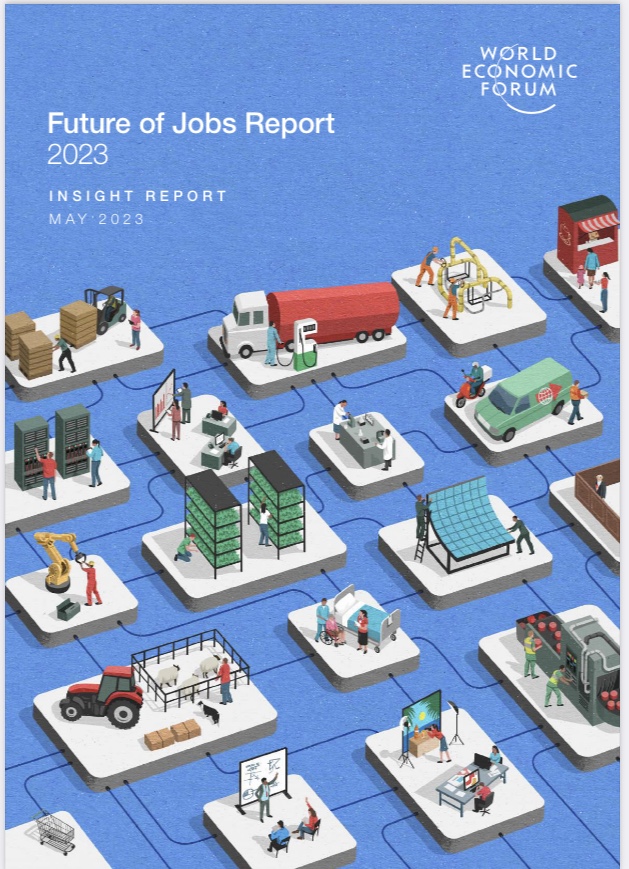Minimum eligibility age for social pensions and house hold poverty: Evidence from Mexico
By David Escamilla Guerrero, Clemente Avila Parra & Oscar Gálvez Soriano This paper examines the impact of social pensions on old-age poverty. To achieve causal identification, we leverage the reduction in the minimum eligibility age of Mexico's flagship non-means-tested social pension program. We find that the program's expansion significantly reduced extreme poverty, mainly among indigenous seniors and in rural areas. However, it had negligible effects on labor force participation, suggesting that social pensions were not effective in ensuring minimum...










